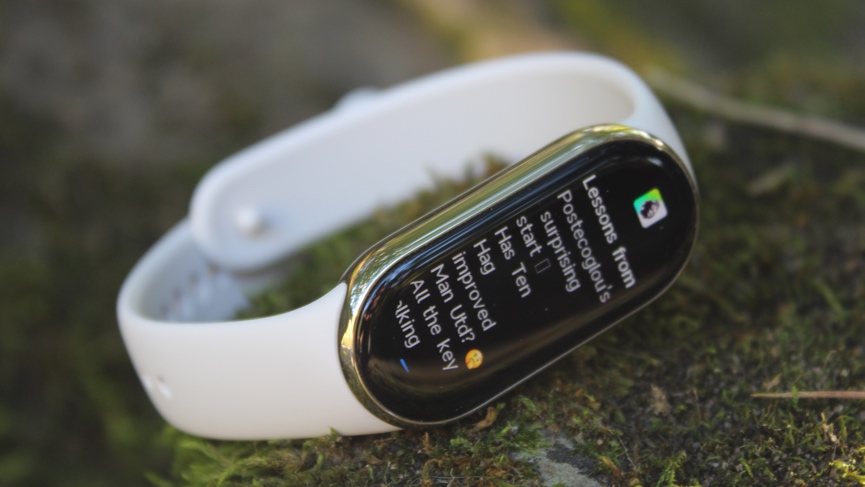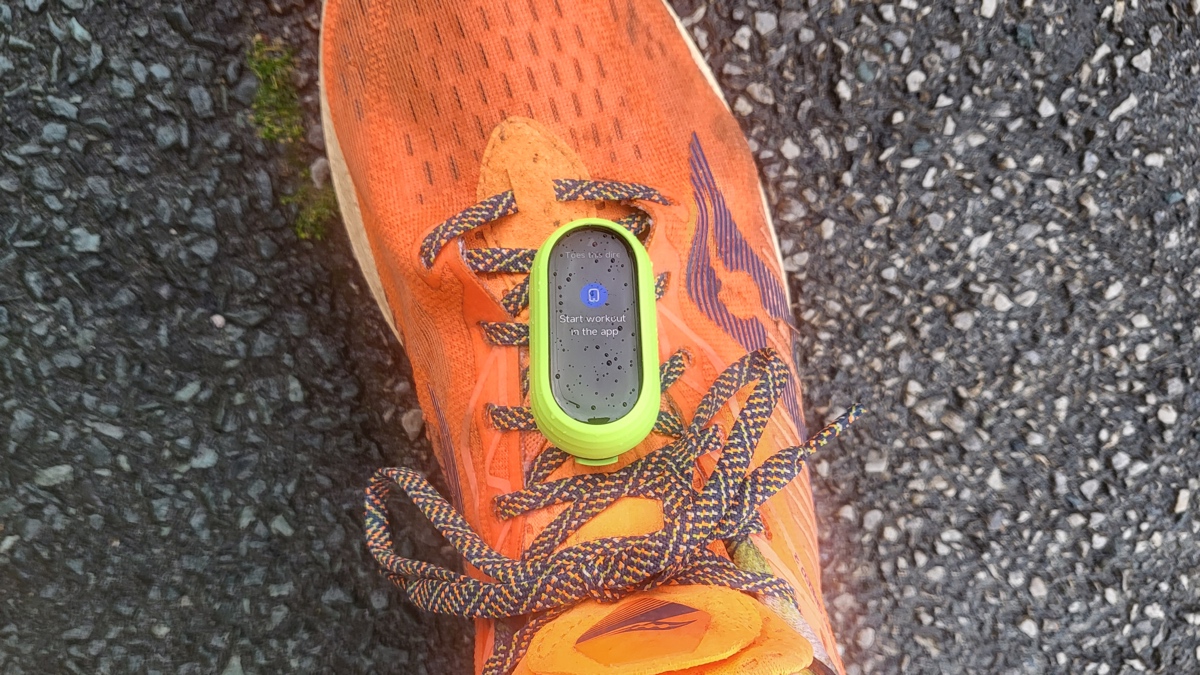
With Xiaomi now releasing global editions of both the Smart Band 8 and Smart Band 8 Pro, it's finally possible to properly compare the two fitness trackers.
With the latter only just being announced by Xiaomi at MWC 2024 in Barcelona, we're yet to fully put it through its paces, though we now have all the official features confirmed.
Below, then, we've pitted the two Xiaomi devices against each other to help you decipher which is the best for your wrist - and budget. Follow along for details on the differences in design, battery life, features, and more.
Quick view: Specs comparison
| Specification | Xiaomi Smart Band 8 | Xiaomi Smart Band 8 Pro |
|---|---|---|
| Design and weight | 48mm x 22.5mm x 10.99mm; 14g (without strap) | 46mm × 33.35mm × 9.99mm; 22.5g (without strap) |
| Display | 1.62-inch AMOLED; 192 x 490 pixels | 1.74-inch AMOLED; 336 x 480 pixels |
| Sensors | 6-axis sensor, PPG heart rate sensor, blood oxygen sensor, ambient light sensor | GNSS, 6-axis sensor, PPG heart rate sensor, blood oxygen sensor, ambient light sensor |
| Battery and charging | 190mAh; up to 16 days / 60 minutes charging time | 289mAh; up to 14 days use / 80 minutes charging time |
Price and availability
Wareable
As we mentioned up top, both of these trackers are now available to buy outside of China, with Xiaomi announcing the global edition of the Band 8 Pro in February 2024. It comes after the Band 8 global edition was released around September.
Both are available through Xiaomi's official channels in the UK and Europe, but, as ever, neither tracker is officially sold by the company in the US.
With that said, you will still be able to pick up both on third-party retailers like Amazon - the price might just vary more than it does across the pond.
For the Band 8, Xiaomi sets the price at £39.99/€39.99 - and this makes it one of the best budget fitness trackers in our current rankings. This roughly converts to around $50.
If you want the more premium Xiaomi tracker, you can instead expect to pay £59.99/€69.99. In the wider context, this is still a budget-level fitness tracker - and one you should be able to pick up in the US for around $70.
Just be aware that the Band 8 Pro is offered in a couple of different variations - one with a standard, polyurethane band and a leather band edition that'll be slightly more expensive.
Design and display
Xiaomi
Despite being from the same broad family, the Band 8 and Band 8 Pro have plenty of design differences; the latter hasn't just got additional functionality inside the same case.
Instead, Xiaomi uses the Band 8 Pro to give users a completely different form factor to consider - effectively halfway between a smartwatch and a fitness tracker. It measures 46mm x 33.35mm x 9.99mm and features a 1.74-inch AMOLED display boasting a resolution of 336 x 480 pixels and a brightness of 600 nits.
On the other hand, the Band 8 is more of a traditional fitness tracker. The case is pill-shaped and measures 48mm x 22.5mm x 10.99mm, and, while the display is also AMOLED, it's also much smaller than the Pro edition.
It officially spans 1.62 inches, but we think there will be plenty out there who will prefer the extra screen space you get from the Pro model - we found the Band 8 wasn't exactly suited to frequent interactions and able to handle features like notifications and music control.
Wareable
We expect the general feel of both of these models to be similar on the wrist, though, given their similar case material. We found the build quality of the Band 8 to be fine, and relatively comparable to Fitbit's much more pricey offerings, such as the Charge 6.
Neither is comparable to a premium smartwatch from the likes of Apple and Google, however, which is to be expected considering the price difference.
Xiaomi has made a real push with this generation to emphasize the versatility of its designs - both of these models feature cases that can easily swap between different bands. And in the case of the Band 8, you can even wear it as a pendant or as a tracking pod on your running shoe.
In the past, neither the Band nor Band Pro lines were particularly stylish, so this is a welcome change that allows you to dress it up slightly for more formal occasions.
Features and tracking
Xiaomi
We haven't had the chance to test out the global edition of the Band 8 Pro just yet, as we say, but we do expect fairly dramatic differences between these two in the day-to-day experience.
While the pair don't appear that different in terms of sensors (both feature the same movement tracking, heart rate monitoring, sleep tracking, and SpO2 detection setup), the addition of GPS to the Band 8 Pro does mean it's able to be used for outdoor exercise away from your phone.
This is a key advantage it holds over the standard model when it comes to workout tracking, especially given that the Band 8's trump card in this regard - running pod support (in Pebble Mode) - wasn't particularly reliable in our testing.
Wareable
As you would expect for the extra cost, the Band 8 Pro is the more impressive on paper. That extra screen affords you a totally different operating system filled with widgets, which we alluded to earlier, and this promises to completely change how you use the device and enjoy exclusive features like the Xiaomi Personal Trainer.
For the most part, however, you get roughly the same features setup - even if they are presented much more nicely on the Band 8 Pro. Features like all-day stress monitoring, women's health tracking, sleep reports, and blood oxygen data are all tracked relatively identically, from the looks of it.
Xiaomi does indicate that the Band 8 Pro's 'four-channel monitoring module' located within the optical heart rate sensor is capable of delivering HR readings 10% more accurately - and SpO2 readings with a 5% improvement - over the previous generation, but it's not clear how it compares to the standard Band 8 just yet. We'll update this once we've compared the two in-depth.
Battery life
Wareable
Given that we haven't had the chance to put the Band 8 Pro through its paces just yet, we'll have to mostly go off Xiaomi's battery claims for now.
However, given experience - and testing the standard Band 8 - we do know that these are generally pretty trustworthy.
For the Band 8, Xiaomi quotes up to 16 days of regular use from that 190mAh unit. However, this involves plenty of features being turned off - including the always-on display (AOD). With most of these turned on and AOD maxed out, we found that the tracker was able to last around five days.
The Band 8 Pro features a larger 289mAh battery, though don't expect it to last quite as long as its smaller sibling. Xiaomi estimates that you'll glean around 14 days of life from the tracker - or around six days if you turn the AOD on. It'll also take slightly longer to charge - 80 minutes versus the Band 8's speedy charging times of around 45-60 minutes.
We'll return to this section to provide a more comprehensive comparison once we've tested the Band 8 Pro, but, at least for now, we'd grade both of these as having solid battery life when compared to the rest of the market.
Our verdict: Which is best?
Xiaomi
We'll reserve our full judgment until we've had the chance to put the Band 8 Pro global edition through the Wareable wringer, but, at least for now, these are our recommendations for those choosing between these two trackers:
Choose the Xiaomi Smart Band 8 if:
- A cheap price is your top priority
- You don't value the extra screen space of the 8 Pro
- You want a slightly better battery life
- You don't need GPS for outdoor tracking
Choose the Xiaomi Smart Band 8 Pro if:
- You're budget-conscious but don't need the cheapest device
- Your wrist can handle a slightly bigger design
- You want to track your outdoor exercise without your phone
- The Band 8's screen will be too small for your needs
How we test
